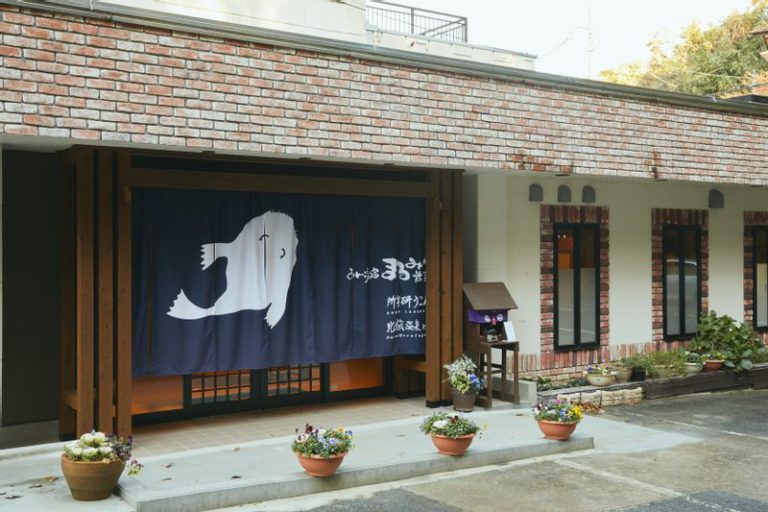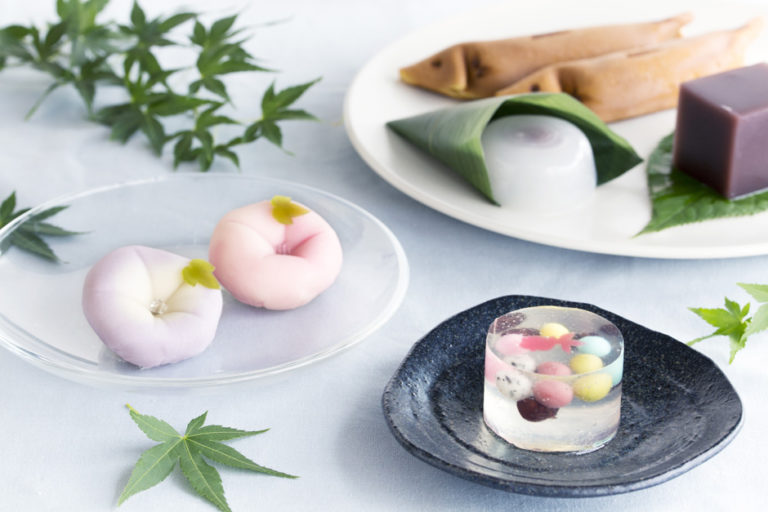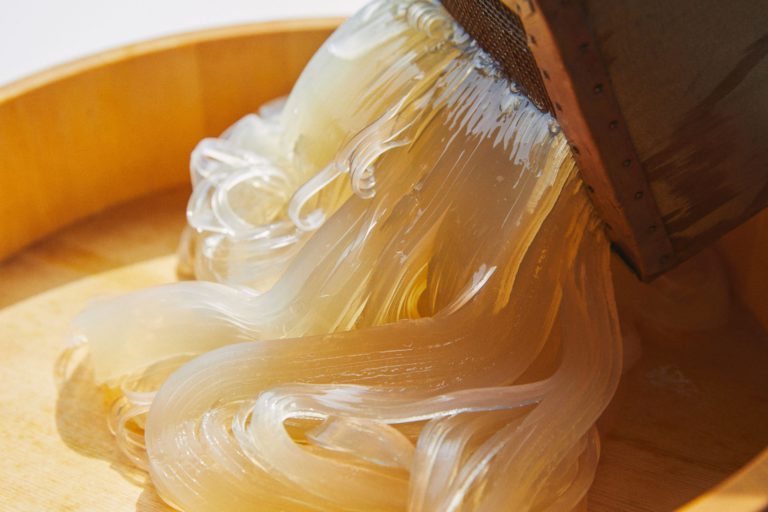The Port Town of Hirakata, Home of Dobujiru—The Origin of Anko Hot Pots
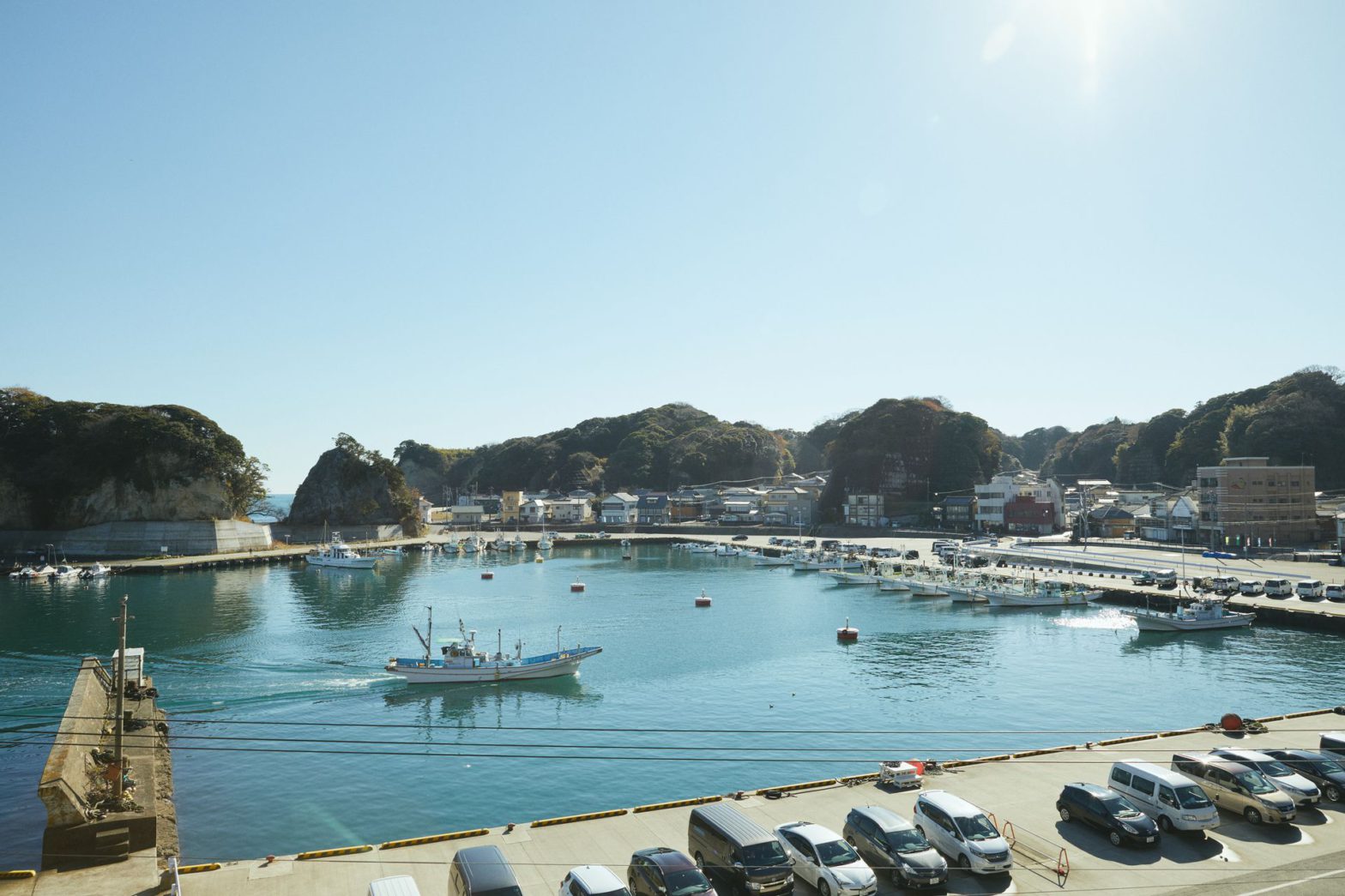
Anko fishing, which evolved in the port town of Hirakata
Hirakata in Kitaibaraki is located at the northernmost area of Ibaraki Prefecture. It is a port town on the Pacific coast, lying on the border of Fukushima Prefecture. It is said that this port town was established at the beginning of the Edo period (1603–1868), and was founded as a port of call for the Sendai clan to deliver their annual rice tax to Edo (present-day Tokyo) during the Kanei era (1624–1643). The Hirakata port made most of its natural inlet formation to create a fine harbor, and flourished as an important port of call between Edo and Ou.
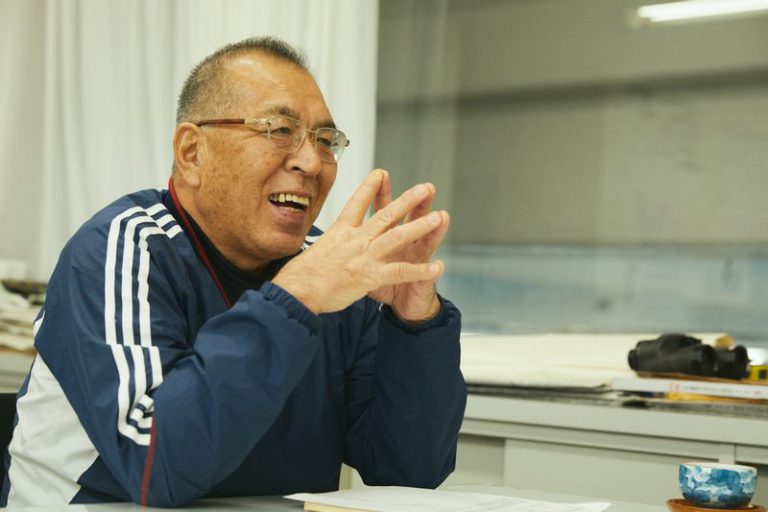
However, as vessels became larger in the Meiji era (1868–1912), the smaller port of Hirakata could not accommodate bigger ships. Along with the development of land transportation with railroads, Hirakata port lost its value as a vital logistics point. Meanwhile, the port started to transform into a fishing port with the start of trawl net fishing around 1887. Naoyuki Takeshi of the Hirakata Fisheries Cooperative Association explains, “This was the start of the current Hirakata port.”
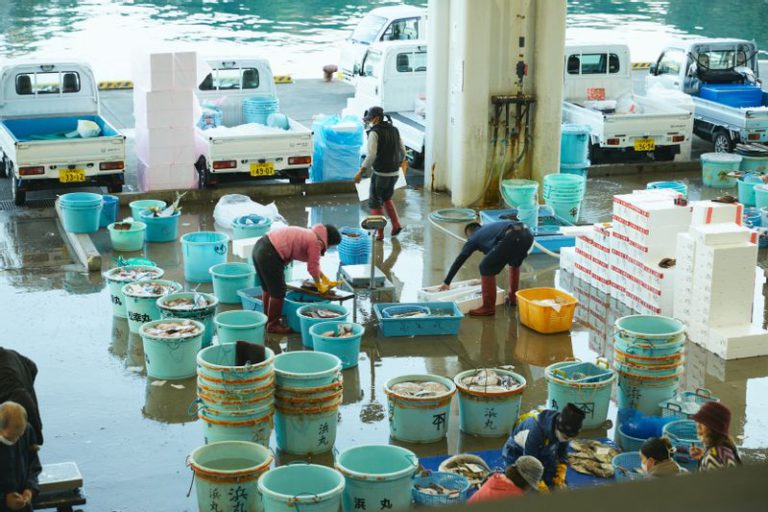
“Trawl net fishing” off the coast of Joban is a dynamic technique in which large net bags are released to the seabed and towed to scoop fish captured inside. Along with flounders, the Ibaraki Prefectural fish, anko is captured along with various species of fish, amassing to an annual haul of 30 to 40 tons. The Hirakata fishing port boasts one of the largest hauls of fish in Ibaraki Prefecture, making up one-third of the prefecture’s total quantity.
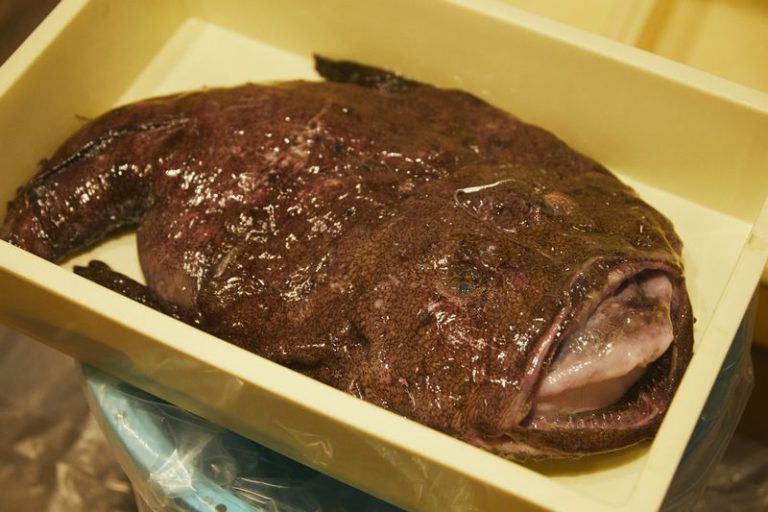
This region is the intersection of the cold Oyashio current and warm Kuroshio current and has water rich in nutrients. Anko fishing is conducted here all year round, except for the prohibited months of July and August, right after spawning season. The number of anko increases in the autumn, and peaks during the cold winter months.
The major species of anko caught here is Kianko. Although it is said that there are more than 200 types of anko, only Kianko and Kutsuanko are fit for human consumption.
“Although these two types are often mixed together, Kutsuanko is darker, whereas Kianko has a yellowish tinge, just like the “xxxitalicxxxKixxxitalicxxx” in its name suggests,” says Naoyuki. Anko caught in the morning are immediately put on auction and transported to various markets, both in the prefecture and out, within the same day.
Dobujiru, local anko cuisine born from the fishing town
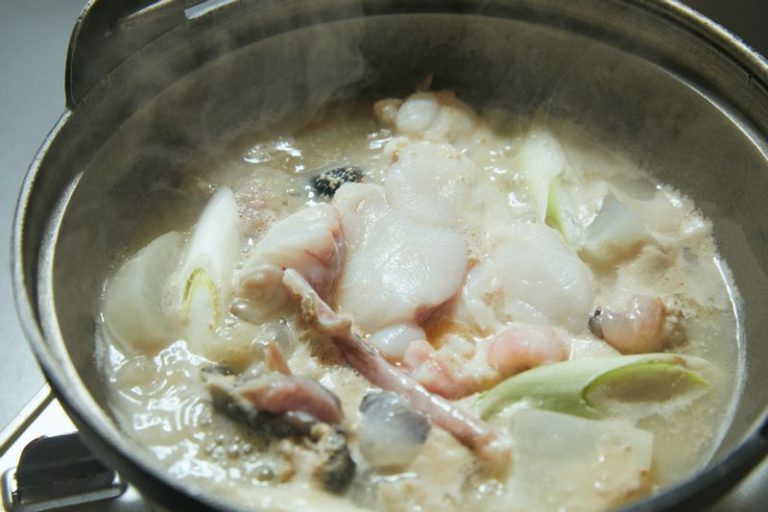
Hirakata is also home to the anko dish Dobujiru, which is a spontaneous cuisine created by local fishermen. It is, in a way, the origin of the standard anko hot pot.
Creating Dobujiru is a dynamic process, just like the fishermen who created it—anko and vegetables are simmered with only the water contained in the ingredients. It is said that anko was chosen as an ingredient because of its water content, as fresh water is scarce on ships. No excess water is used for cooking, and the rich flavor of the famous anko liver, also known as the “foie gras of the sea,” melts into the broth, creating a dish bursting with flavor.
“Dobujiru warmed the fishermen from the inside, as they had to work offshore in icy, harsh winter weather day after day. I used to slightly dislike the dish, because we would have it in place of miso soup at home, every single day!” Naoyuki laughs, recalling his childhood.
Dobujiru, which used to fill fishermen’s bellies, became a staple dish among the local residents of Hirakata as more anko was able to be caught with the evolution of fishing techniques.
This famous winter delicacy is the pride of the region
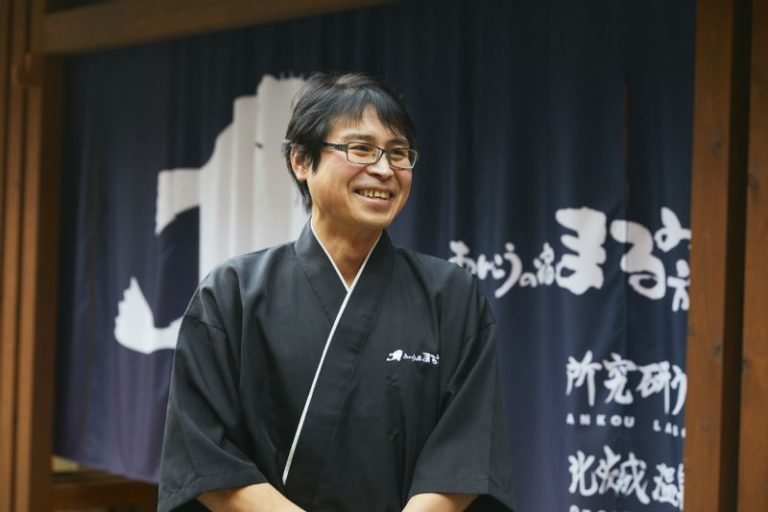
Thanks to the work of skilled chefs, anko, which used to be fare for fishermen, has become a popular ingredient in modern times. Yoshihisa Takeshi, the representative director of Marumitsu Ryokan, which opened as the first guest house in Hirakata after World War II and is currently known as a lodging at which guests can enjoy anko cuisine, says,
“My grandparents, who were brokers at the port, opened the first guesthouse in Hirakata in the 1960s. They were looking for extra income in the months of July and August when fishing was prohibited. Many guests flocked to the guesthouse to go swimming in the ocean, but the number of customers plummeted once summer ended. My grandparents made up their minds to do something about this, researching and developing anko to promote it as a local specialty dish.”
For many years, anko caught in trawl nets were regarded as insignificant fish in Hirakata. However, as anko started to receive attention as a local specialty dish, the regional guesthouse association started to serve Dobujiru to tourists from around 1993.
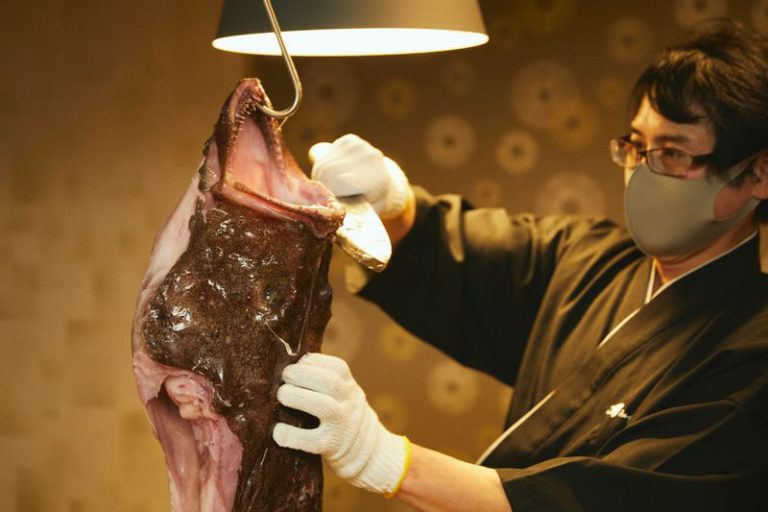
Yoshihisa flawlessly performs the tsurushi-giri method, in which fish is cut per body part while hanging. As anko is covered with a slippery-textured slime, making it difficult to cut on a cutting board, this traditional technique carves hanged anko in mid-air while rotating it. The gills are cut off, and the skin is peeled off with both hands as the large fish is dismantled piece by piece, making it an impressive performance as well.
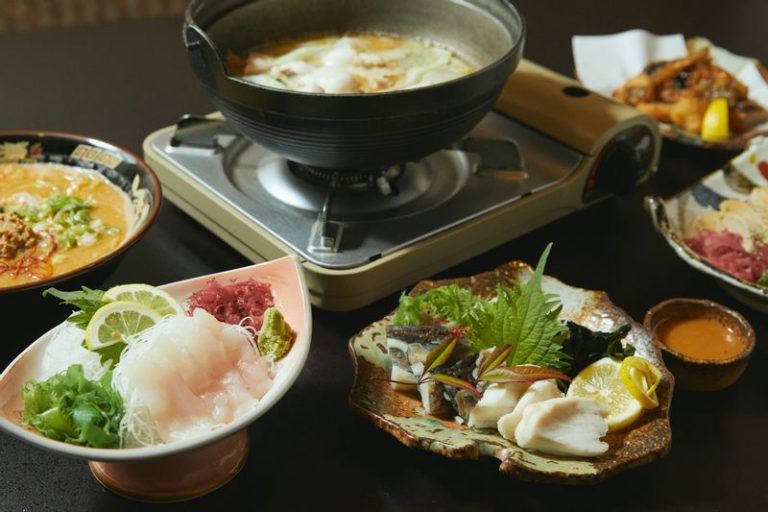
The “body, liver, stomach, skin, ovary, gills and fins” of the anko are all delicious to eat, and are commonly referred to as the “seven tools of anko”. Marumitsu Ryokan takes extra care in its preparation, such as draining blood, to remove any off-tasting elements, and offers a wide selection of anko dishes including Dobujiru, Tomozu (anko liver with miso and vinegar), sashimi, deep-fried anko, and steamed anko liver.
Unlike common anko hotpots, which are seasoned with soy sauce and salt, Dobujiru uses miso. The taste of miso complements anko liver perfectly, allowing us to savor the exquisite flavors of the seven tools, all the way to the finishing touches of a hot pot experience—rice porridge.
Tomozu is a dish in which boiled anko parts are eaten with a paste of pureed anko liver mixed with vinegared miso, allowing us to enjoy various textures such as the plump and light-tasting body and resilient skin. Comparing the differences between parts in various dishes is also a fun way to have anko.
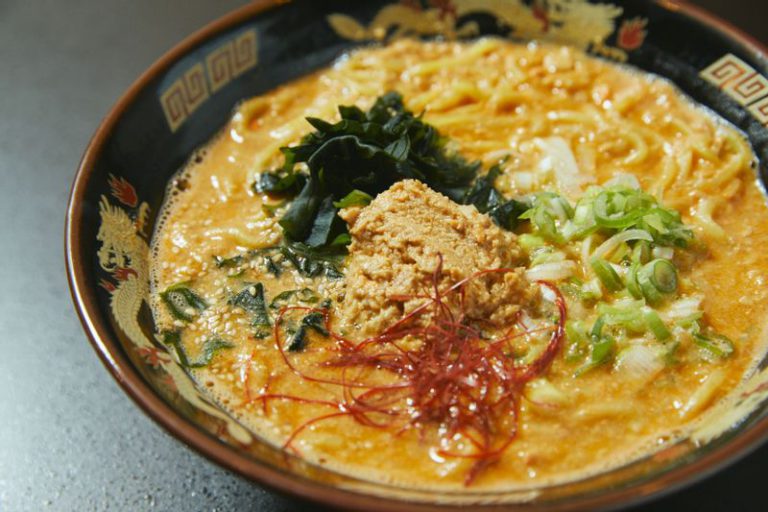
In 2015, Yoshihisa established the xxxexcludexxxAnkoxxxexcludexxxu Laboratory across the street from Marumitsu Ryokan. Research and development on new anko cuisine is conducted here, with a store on the first floor and a restaurant on the second. We cannot help but be intrigued because after the Ankimo (anko liver) ramen launched, Yoshihisa has expressed his desire to create anko food for space travel.
Hirakata’s anko cuisine continues to evolve!

